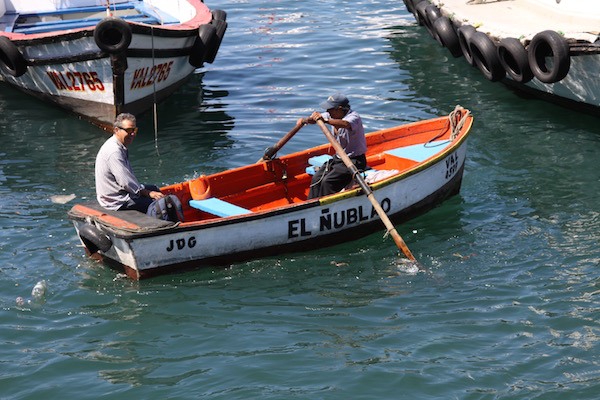Valparaiso is a name that appears throughout history. For example, on March 28, 1814 during the War of 1812, the U.S.S. Essex was sunk by the British in the harbor there killing 58 marines. There’s a touching memorial in the Cemetery for the Dissidents (non Catholics) that remains to this day.

The memorial is maintained by the U.S. Marine Corps.
Today it’s the second-largest metropolitan area in Chile and a popular beach getaway for Santiago’s elite. But before 1914, it was the “jewel of the Pacific.” It was one of the largest and most important ports on the Eastern Edge of the Pacific Ocean. Because there was no easy way to get across the US, the boom years of California’s Gold Rush (1848-1858) were a golden decade for Valparaiso, as well. Many of the miners sought refuge in the port after the sometimes sickening crossing of the Straits of Magellan or – worse yet – the rounding of Cape Horn. But everything changed quite literally overnight in 1914 when the Panama Canal opened.
And I wanted to see what happened to a city a century after it was rendered practically useless. How does a city transform, I wondered?
The route from Santiago to Valparaiso is one of the most heavily trafficked in the entire country. Especially on summer weekends when the people who work in Santiago join their families who spend all summer at the coast. It’s like The Chilean Hamptons. The journey to Valparaiso was easy enough. Especially since it involved a couple of visits to wineries.

The route from Santiago to Valparaiso winds through the Casablanca valley, which looks identical to Northern California.
One wine maker asked me, “¿De donde eres, Señor? España?”
“Jajaja. No. Soy de los Estados Unidos.” As an aside, in Spanish, “Ha Ha Ha” is spelled “Jajaja.” #FactForTheDay
“Oh. Thanks for coming. You have an excellent accent.”
In my experience, many South Americans have a strained relationship with the “old country.” It would appear that Spaniards have earned a reputation for coming in as though they own South America. The first time that happened it didn’t go so well. At least for the Incas in Perú.
In any event, the wineries were certainly nice. But I was eager to get to Valparaiso. And I was certainly richly rewarded.

The waterfront is still busy since most of Chile’s exports (primarily copper and lithium) flow through.
The city is vibrant and alive despite a difficult past (not only did Valparaiso get a wallop from the Canal, but there have been a series of bad earthquakes, too). Crumbling walls are covered with bright and cheery murals painted by local artists. The waterfront is breathing with music and dancing. And the light has burned out in the red light district (once a tremendous swath of the city) and, as far as I could see, it was a safe place.
It’s also a city for parties. If you find yourself in Chile for New Year’s Eve, go no farther than Valparaiso. And it’s easy to get there. The government shuts down the outbound lanes of the highway to increase traffic flow into the city for their annual fireworks show. It’s quite a spectacular show according to a Google Images search.
Speaking of traffic, there was quite the jam heading out. The trip, which should have taken 90 minutes turned into a standstill that meant three and a half hours sitting in a car with no air conditioning.
Oh well. I saved the heat for my next stop…





Trackbacks/Pingbacks